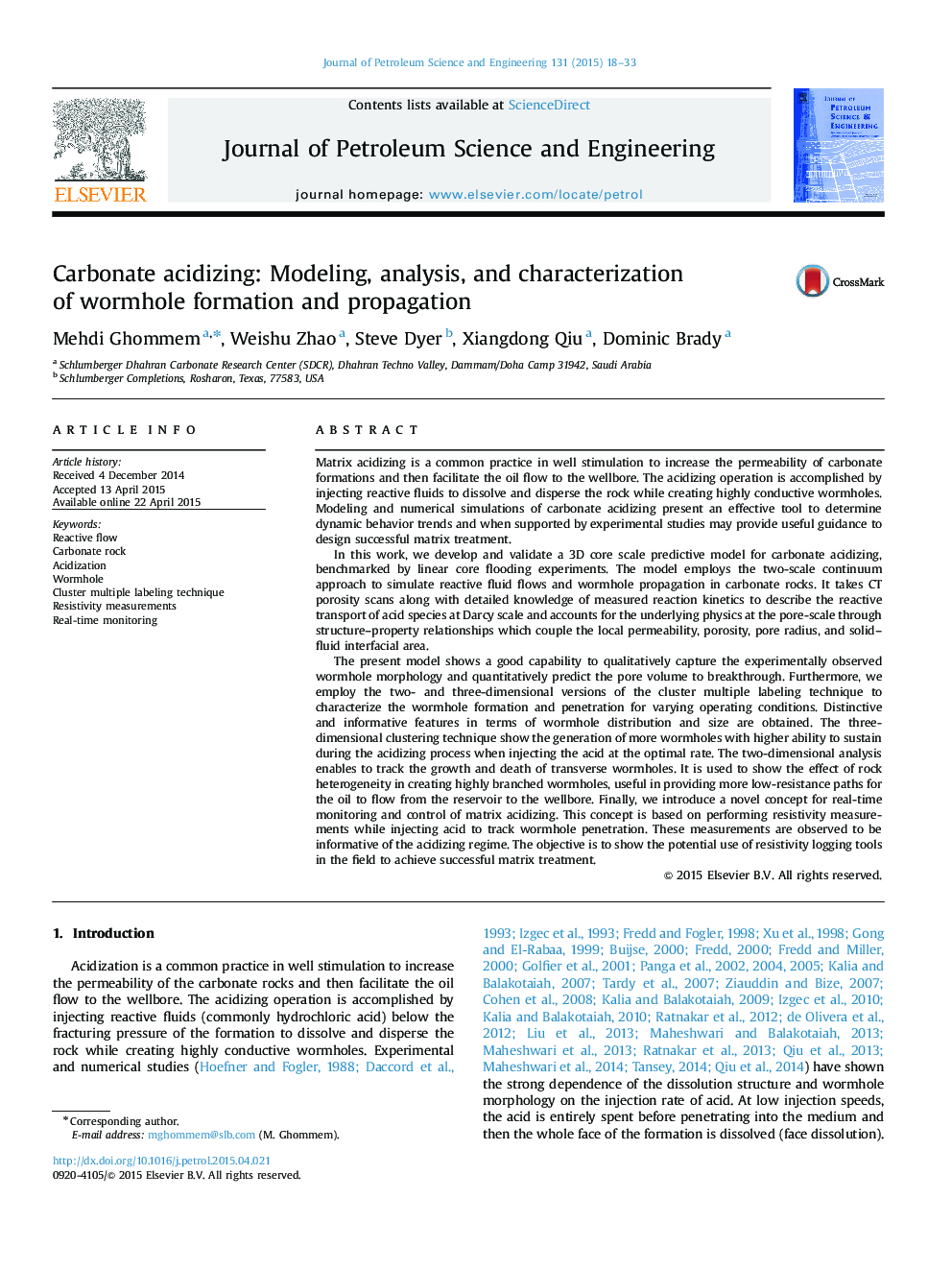| Article ID | Journal | Published Year | Pages | File Type |
|---|---|---|---|---|
| 1754808 | Journal of Petroleum Science and Engineering | 2015 | 16 Pages |
•Numerical simulation of matrix acidization (well stimulation).•Reactive flow in carbonate rocks.•Analysis of wormhole formation and propagation.•Characterization of wormhole distribution and size.•Real-time monitoring and control of matrix acidizing.
Matrix acidizing is a common practice in well stimulation to increase the permeability of carbonate formations and then facilitate the oil flow to the wellbore. The acidizing operation is accomplished by injecting reactive fluids to dissolve and disperse the rock while creating highly conductive wormholes. Modeling and numerical simulations of carbonate acidizing present an effective tool to determine dynamic behavior trends and when supported by experimental studies may provide useful guidance to design successful matrix treatment.In this work, we develop and validate a 3D core scale predictive model for carbonate acidizing, benchmarked by linear core flooding experiments. The model employs the two-scale continuum approach to simulate reactive fluid flows and wormhole propagation in carbonate rocks. It takes CT porosity scans along with detailed knowledge of measured reaction kinetics to describe the reactive transport of acid species at Darcy scale and accounts for the underlying physics at the pore-scale through structure–property relationships which couple the local permeability, porosity, pore radius, and solid–fluid interfacial area.The present model shows a good capability to qualitatively capture the experimentally observed wormhole morphology and quantitatively predict the pore volume to breakthrough. Furthermore, we employ the two- and three-dimensional versions of the cluster multiple labeling technique to characterize the wormhole formation and penetration for varying operating conditions. Distinctive and informative features in terms of wormhole distribution and size are obtained. The three-dimensional clustering technique show the generation of more wormholes with higher ability to sustain during the acidizing process when injecting the acid at the optimal rate. The two-dimensional analysis enables to track the growth and death of transverse wormholes. It is used to show the effect of rock heterogeneity in creating highly branched wormholes, useful in providing more low-resistance paths for the oil to flow from the reservoir to the wellbore. Finally, we introduce a novel concept for real-time monitoring and control of matrix acidizing. This concept is based on performing resistivity measurements while injecting acid to track wormhole penetration. These measurements are observed to be informative of the acidizing regime. The objective is to show the potential use of resistivity logging tools in the field to achieve successful matrix treatment.
